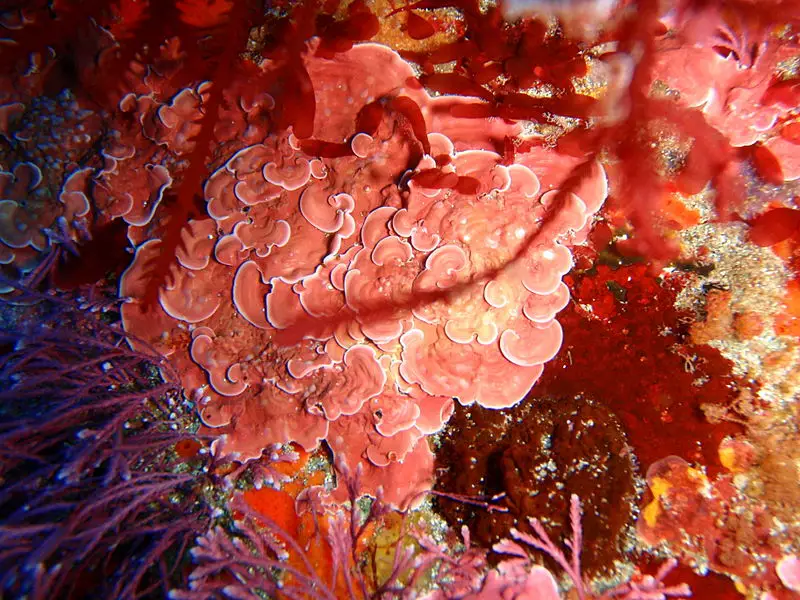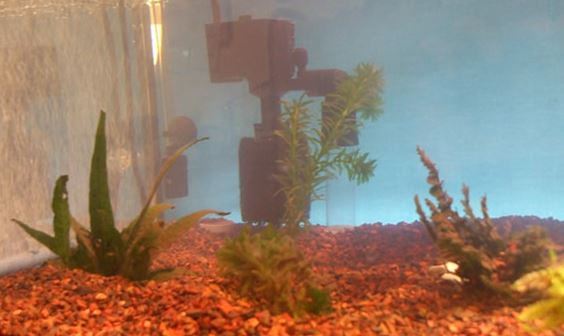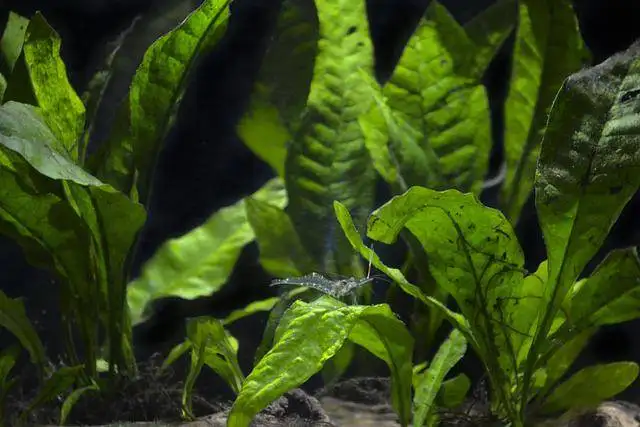Orange Coralline algae come from the red algae family or the Phylum Rhodophyta. The growth of Coralline algae in a saltwater aquarium is indicative of an aquatic ecosystem in good health. Coralline algae are most often a purple color however, there are over 1600 known species that range in color including orange.
If you’ve noticed orange coralline algae forming in your tank, are interested in introducing it to your tank’s ecosystem, or are simply looking for more information on this shade of Coralline algae, read on for all the key facts you need to know.
Can Coralline algae be orange?
Because most Coralline algae are of the purple hue whether that’s a light violet or a radiant fuchsia, you may be curious whether it comes in orange or, if you have orange Coralline algae on your hands, if that means anything important.
The answer is that Coralline algae grow in all sorts of different colors, and orange is one of them. Studies on orange Coralline algae indicate that it only grows in specific spots. These are often in shallow waters. The orange tone likely comes from the algae’s ability to filter out extreme U.V. rays.
However, this color of Coralline algae has been found up to 10 feet below the water’s surface as well as entirely out of the water with just the moisture of the passing waves.
Therefore, if you spot orange Coralline algae in your tank, it may be due to the high U.V. lighting you have installed.
However, it is important to note that orange Coralline algae are considered very rare. In fact, many labs are trying to propagate it as its ability to filter UV could be beneficial for various functions.
What colors do Coralline algae come in?
There are over 1600 known species of Coralline algae, so the possible colors are seemingly endless. Most Coralline algae are purple or a color that falls within the purple spectrum. Some will be more on the pinker side, while others will appear a deep, true violet. However, species have been found that are blue, yellow, red, green, and even white.
As described, orange Coralline algae are rare because of the specific conditions it requires. Orange Coralline algae will appear a brighter, almost florescent orange depending on its location. Studies show the brighter orange Coralline algae tends to be located in shallow water or even above sea level.
Are Coralline algae good for your tank?
Yes. Coralline algae are often called a “hitchhiker” as it enters one’s tank on the backs of rocks and then proliferates. However, this type of algae is a very welcome hitchhiker for several reasons.
1. Contributes to the aesthetics of the aquarium
Coralline algae come in endless beautiful colors and therefore make any tank more colorful and appealing. The colors are particularly beautiful when paired with each other in one tank to add a gradient element to the aquatic ecosystem, as would often appear in nature.
2. Contributes to the reef health
In addition to its good looks, Coralline algae also help to maintain a healthy tank and, in the wild, a healthy ocean ecosystem. It is a crustose-type algae, meaning that it has hard calcareous deposits in its cell walls.
This makes it extremely strong and useful in binding itself around certain more delicate structures such as reefs and corals. Thus, it holds key players in aquatic ecosystems together and protects them.
3. Manages invasive species of algae
In addition to acting as a shield and adhesive for some of the most important elements in the ocean, Coralline algae also compete with invasive algae such as hair algae, green algae, and mat algae. If left unattended, these algae forms would overtake rocks, reefs, and other ecosystems, overcrowding certain key plants and animals.
Coralline algae not only cut these algae forms back by taking up space on rocks and reefs, but it also often has a chemical defense mechanism that keeps these invasive species away from it.
This holds true within your tank, if you have certain algae types growing that have begun taking over, it will throw off the balance within your tank. Thus, Coralline algae is a wonderful, natural way to ensure your tank’s ecosystem is functional and balanced.
Do Coralline algae glow in the dark?
Only certain colors of Coralline algae will glow in the dark. The fluorescent orange species is likely one that will glow in the dark. This phenomenon is called bioluminescent and occurs because of a chemical reaction in which luciferin molecules within the plant are oxidized, thus releasing excess light energy.
Because algae absorb light, this is possible however, whether it glows and the extent to which it glows is largely dependent on the conditions in the location the algae lives.
Can I introduce Coralline algae to my tank?
Yes, you will have to introduce Coralline algae if you desire it in your tank because it will not grow on its own. As mentioned, the most common way Coralline algae will find itself in your tank is by hitchhiking on the rocks, snails, and hermit crabs that you introduce to your tank.
These will have to be from the wild, otherwise it is highly unlikely they will have any Coralline algae attached to them.
You can make it easier for the algae to proliferate by setting up the right aquarium conditions for it to grow. Two key methods to do this are by ensuring there is ample light in your tank and by maintaining stability in your tank as Coralline algae-like bright, stable environments.
Final Thoughts
Now that you know about Coralline algae particularly, the rare orange species of it, you can observe it in the wild or attempt to introduce it to your tank. Remember, Coralline algae is indicative of good health, so be sure to take proper care of it if you should find it in your tank or in the wild.



